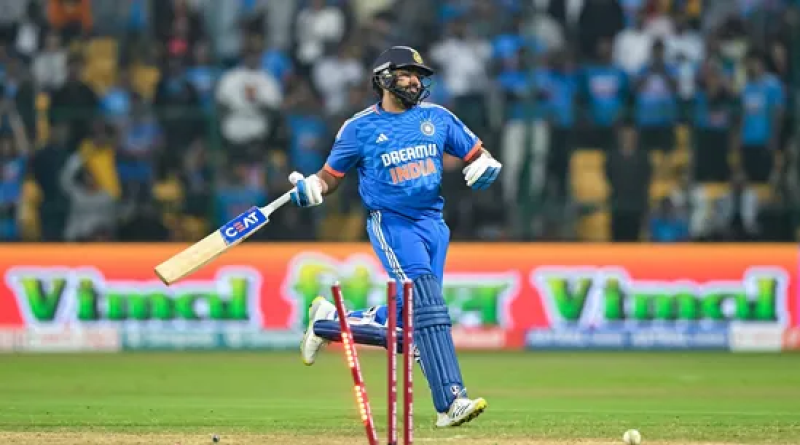Double Super Over Drama Unfolds: Decoding the Rules and Tactics

New Delhi: In an unprecedented turn of events, the third T20 match between India and Afghanistan etched its name in history with a thrilling double super over, the first of its kind in international cricket. Amidst the close encounter, several interesting rules and tactical decisions came to light, leaving fans on the edge of their seats.
As both the teams scored the same score of 212 in the stipulated 20 overs, drama unfolded with the start of the Super Over. Here are the details of some of the key aspects that added spice to this remarkable encounter:
1. Bowler’s Dilemma:
In a double super over, a bowler who took part in the first super over is ineligible to bowl in the second super over. Due to this rule, Afghanistan turned to Farid Ahmed after early heroics from Azmatullah Umarzai and Mukesh Kumar. India captain Rohit Sharma strategically handed the ball to leg spinner Ravi Bishnoi, which resulted in a dramatic turn and ensured India’s victory.
2. Batting Switch Strategy:
Teams will have to change their batting order in the Super Over, the team batting second in the regular 20 overs will take the lead in the Super Over. Afghanistan, batting second initially, won the first innings in the Super Over, while India chased in the second Super Over. This strategic move keeps the competition fair and unpredictable.
3. Batsman Eligibility:
MCC law states that a batsman out in the first Super Over cannot bat in the second Super Over. However, if a batsman listed for the first Super Over remains unbeaten or retires hurt, they are eligible for the second Super Over. India’s selection of Sanju Samson in place of Yashasvi Jaiswal and Rinku Singh in place of Rohit Sharma was a strategic decision based on their performances in the opening Super Over.
4. Rohit Sharma’s confusing partnership:
Confusion arose when Rohit Sharma started participating in the second Super Over after retiring in the first Super Over. The distinction between being ‘retired’ and ‘retired’ played an important role. Although Rohit was ‘retired out’, he batted again, presumably to take advantage of Rinku Singh’s fresh legs to run between the wickets.
5. What if it’s a tie again?:
In the rare scenario of a tie in the second Super Over, cricket fans will watch the third Super Over, and so on until a clear winner emerges. While the world has experienced the drama of double Super Overs twice so far, the possibility of a triple Super Over remains highly uncertain.
The encounter between India and Afghanistan offered high-octane cricket and highlighted the intricacies of the Double Super Overrules, leaving fans in awe of the unpredictability and excitement of the game.






Pingback: โคมไฟ
Pingback: AMBKING
You can definitely see your skills in the work you write. The world hopes for even more passionate writers like you who are not afraid to say how they believe. Always go after your heart.
Pingback: iTune gift card
Pingback: sexy girl
Pingback: นักสืบเอกชน
Pingback: 5 เกมสล็อตที่ได้รับความนิยมอย่างมากกับ edm888
Pingback: once human hacks
Pingback: E-Sport มีความแตกต่างกับกีฬาจริงอย่างไร
I’ve been absent for some time, but now I remember why I used to love this site. Thank you, I’ll try and check back more often. How frequently you update your web site?
Deference to author, some great selective information.
Pingback: ทัวร์ลาว
Pingback: hit789
Pingback: เกมส์อีเว้นท์
Pingback: redirected here
Pingback: Thai Lottery หวยที่คนไทยทุกคนไม่ควรพลาดกับ LSM99
Appreciating the commitment you put into your blog and detailed information you provide. It’s nice to come across a blog every once in a while that isn’t the same unwanted rehashed material. Excellent read! I’ve bookmarked your site and I’m including your RSS feeds to my Google account.
Great – I should definitely pronounce, impressed with your web site. I had no trouble navigating through all tabs as well as related information ended up being truly simple to do to access. I recently found what I hoped for before you know it in the least. Reasonably unusual. Is likely to appreciate it for those who add forums or something, site theme . a tones way for your customer to communicate. Excellent task..
Great – I should definitely pronounce, impressed with your site. I had no trouble navigating through all the tabs as well as related information ended up being truly simple to do to access. I recently found what I hoped for before you know it at all. Reasonably unusual. Is likely to appreciate it for those who add forums or something, web site theme . a tones way for your client to communicate. Excellent task.
Pingback: นักสืบ
Pingback: highbay
Today, I went to the beachfront with my children. I found a sea shell and gave it to my 4 year old daughter and said “You can hear the ocean if you put this to your ear.” She placed the shell to her ear and screamed. There was a hermit crab inside and it pinched her ear. She never wants to go back! LoL I know this is entirely off topic but I had to tell someone!
Enjoyed studying this, very good stuff, thanks. “All things are difficult before they are easy.” by John Norley.
I always was interested in this subject and still am, regards for posting.
Great post. I am facing a couple of these problems.
Enjoyed reading through this, very good stuff, regards. “It is in justice that the ordering of society is centered.” by Aristotle.
I likewise believe thus, perfectly indited post! .
Hmm is anyone else having problems with the images on this blog loading? I’m trying to figure out if its a problem on my end or if it’s the blog. Any responses would be greatly appreciated.
Hiya, I’m really glad I’ve found this information. Today bloggers publish just about gossips and net and this is really irritating. A good website with exciting content, this is what I need. Thank you for keeping this site, I’ll be visiting it. Do you do newsletters? Can’t find it.
Pingback: เติมเกม
I think this is one of the most important information for me. And i’m happy reading your article. But want to remark on some common issues, The web site style is perfect, the articles is in reality excellent : D. Excellent job, cheers
I always was concerned in this subject and still am, thankyou for putting up.
But wanna input that you have a very nice web site, I love the style and design it actually stands out.
Excellent blog here! Also your web site loads up very fast! What web host are you using? Can I get your affiliate link to your host? I wish my website loaded up as fast as yours lol
I’m curious to find out what blog system you’re utilizing? I’m experiencing some minor security issues with my latest site and I would like to find something more secure. Do you have any suggestions?
I love your writing style truly enjoying this site.
Pingback: ปริ้นโปสการ์ด
Hello just wanted to give you a quick heads up. The words in your article seem to be running off the screen in Safari. I’m not sure if this is a format issue or something to do with browser compatibility but I thought I’d post to let you know. The design and style look great though! Hope you get the issue solved soon. Kudos
I think this is among the most important information for me. And i am glad reading your article. But want to remark on few general things, The website style is perfect, the articles is really great : D. Good job, cheers
I got what you mean , thankyou for posting.Woh I am happy to find this website through google. “I would rather be a coward than brave because people hurt you when you are brave.” by E. M. Forster.